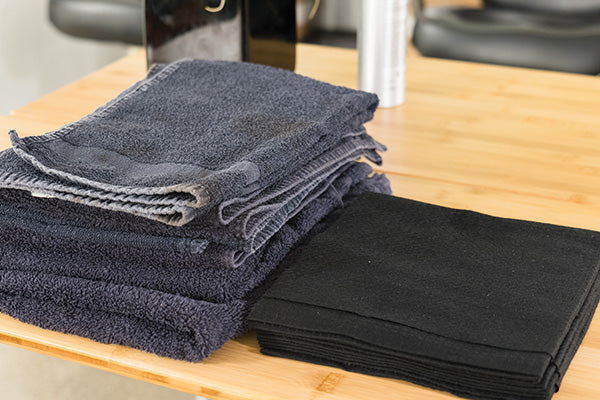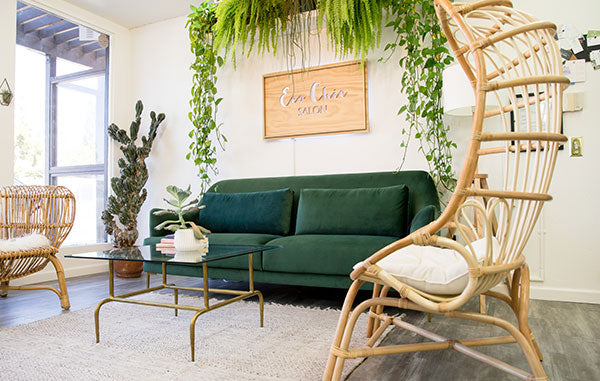Burnout is on the rise across many industries, but in our business it's at an all time high. Sometimes, even before their career has even started, which can spell disaster for our industry if we aren't ready to adapt and thrive. Recently you've probably seen the news with the federal government calling out the health epidemic across the country stemming from loneliness. As society becomes more and more lonely, physical interactions like you experience with clients become more and more important. The intensity also cranks up when clients become so much more reliant on a small number of interactions. So how do you protect your team from feeling the burden of all that emotional care? Leaders can take proactive steps to create a supportive work environment and promote mental well-being among their employees. Here are some strategies to consider:
#1 - Foster a positive and inclusive workplace culture
Sound like a no-brainer? In a multi-generational workplace, that keeps getting harder for leaders to maintain. Cultivating a positive and inclusive environment where employees feel valued, respected, and supported is paramount to the feeling of safety and therefore driving down the stress hormones that come with feeling isolated. If you start from a place of comfort and ease, it helps to offset the social battery drain during their appointments. Encourage teamwork, open communication, and collaboration among the team and promote a culture that prioritizes mental health and well-being.
#2 - Provide regular breaks and time off
Hustle culture is getting some backlash and for good reason. When your stylists get a break between appointments, it shouldn't shift from one type of interaction to another, like answering client messages and social media DMs. Ensure that employees have adequate breaks and time off in between appointments to recharge and manage their own well-being. Things like insisting client communications come to the front desk to give stylists a mental break, and dedicating time in the day to discuss work matters, give updates on their schedule, return messages and post to social media. These tasks need to get done, but encouraging employees to take regular breaks during the workday (and sending them outside when weather permits) to relax and decompress pays dividends in performance and retention.
#3 - Encourage self-care practices
Promote self-care practices and keep it part of the conversation. Educate them about the importance of self-care and provide resources such as workshops or training sessions on stress management techniques, mindfulness, or relaxation exercises. Encourage stylist to prioritize their mental and physical well-being at home as well as in the salon. Salons like The Network Salon in Connecticut, by Gina Bianca, are going so far as to expand their salon space to include a yoga studio to help their team get access to the benefits of a yoga practice.
#4 - Implement stress management techniques
Offer stress management techniques and resources that can help stylists and team members cope with the demands of working with increasingly needy clients. This can include small cultural practices like reminders in the breakroom to do three quick stretches, creating an outdoor space for breaks, providing access to stress reduction programs, organizing team-building activities, or offering workshops on stress management and resilience.
#5 - Foster team support
Encourage social connections among your employees that help to ensure no stylist feels alone and they can give each other support. Arrange time in the weekly schedule for discussions and support related to their work, their life distractions, particularly toxic clients or situations and emotional development that is sometimes best to come from peers. This sense of camaraderie and support within the workplace can build strength when faced with a long day of appointments on days where stylists may have something going on at home or they are simply a little depleted on the social battery. Strong social connections with your team help reduce feelings of isolation and promote overall well-being.
#6 - Recognize and appreciate employees
Acknowledge and appreciate the hard work and contributions of your team to boost feelings of belonging, appreciation and trust. Regularly recognizing achievements, providing positive feedback, and creating a culture of appreciation builds up the scales of gratitude, positivity, and self confidence that can often get tipped towards negativity if dealing with a lot of emotional drain from clients. Feeling valued and recognized can contribute to improved job satisfaction and overall mental well-being.
#7 - Provide professional development opportunities
We've all been studying up on the up-and-coming generation and if you've read anything about these young professionals, you'll definitely know that career development is top of mind for them. When your mind is engaged in something challenging, new, and exciting, the growth helps to spark their minds and creates an immense sense of satisfaction and passion for creatives. Keep that education calendar as packed to give the team something to look forward to and keep them engaged.
#8 - Open channels of communication
A leader is responsible for many things, but top of that list is culture and communication. Create a safe space where employees feel comfortable discussing any concerns, challenges, or difficulties they may be facing. To do that, building trust with each employee is important which can take time and is often more than just words or a 'policy' but in actions demonstrating you truly care about them as people and are there to support them. Sounds simple, but as busy owners and with challenges of your own it can take some reminders to ensure you keep moving towards that North Star as an empathetic leader. Regularly check in with employees individually to provide support and address any issues they may be experiencing or performance concerns of your own.
#9 - Offer employee assistance programs (EAPs)
This one comes straight from HR, but it's something that can certainly set you apart as an employer that cares. An Employee Assistance Program, also called EAP, includes a wide range of services that you may already have in your benefits portfolio. Including things like confidential counseling services, mental health resources (many can be found for free through community programs), health and wellness opportunities, community development, and crisis services are important resources to protect the well being of your stylists and employees. Incorporating these into your benefits program and also reinforcing these during your meetings to ensure they are utilized can help prevent or manage mental health concerns.
Okay, okay...it's not all doom and gloom in the salon. In fact, most days it's quite the opposite! Interacting with your guests and helping them achieve their beauty goals is definitely one of the reasons most often cited by stylists as to why they started their career. So, this is not all doom and gloom. However, life has it's challenges and in a high-touch occupation it's important to be cognizant and supportive before burnout is on the horizon. Remember that each employee's needs and experiences are unique, so it's crucial to listen actively, be responsive to their concerns, and tailor your support accordingly. Regularly assess the work vibes, solicit input and ideas from employees, and make adjustments as needed to prioritize their well-being.









